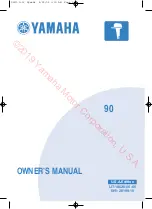
Chapter 4 AMIBIOS Setup
3 6
3 6
S t a n d a r d C M O S S e t u p O p t i o n s ,
S t a n d a r d C M O S S e t u p O p t i o n s ,
Continued
H a r d D i s k D r i v e C :
H a r d D i s k D r i v e C :
H a r d D i s k D r i v e D :
H a r d D i s k D r i v e D :
Move the cursor to these fields via
→
or
←
and select the correct hard disk drive type by pressing <PgUp> and <PgDn> to change
values. The hard disk drive manufacturer supplies the hard drive parameters. Match these parameters to the Hard Disk Drive Type
table on page 37. If the drive parameters do not match, select
Type 47
and enter the parameters directly into STANDARD CMOS
SETUP. Use
Type 47
for IDE drives. Select
Not Installed
to configure SCSI drives.
Hard disk drive types are identified by the following parameters:
Parameter
Description
Type
The number designation for a drive with certain identification
parameters.
Cylinders
The number of cylinders in the disk drive.
Heads
The number of heads.
Write
Precompensation
The size of a sector gets progressively smaller as the track
diameter diminishes. Yet each sector must still hold 512 bytes.
Write precompensation circuitry on the hard disk compensates
for the physical difference in sector size by boosting the write
current for sectors on inner tracks. This parameter is the track
number where write precompensation begins.
Landing Zone
This number is the cylinder location where the heads will
normally park when the system is shut down.
Sectors
The number of sectors per track. Hard drives that use MFM
have 17 sectors per track. RLL drives have 26 sectors per
track. ARLL and ESDI drives have 34 sectors per track. IDE
and SCSI drives can have even more sectors per track.
Capacity
The formatted capacity of the drive is Number of Heads *
Number of Cylinders * Number of Sectors per Track * 512
(Number of Bytes per Sector).
















































